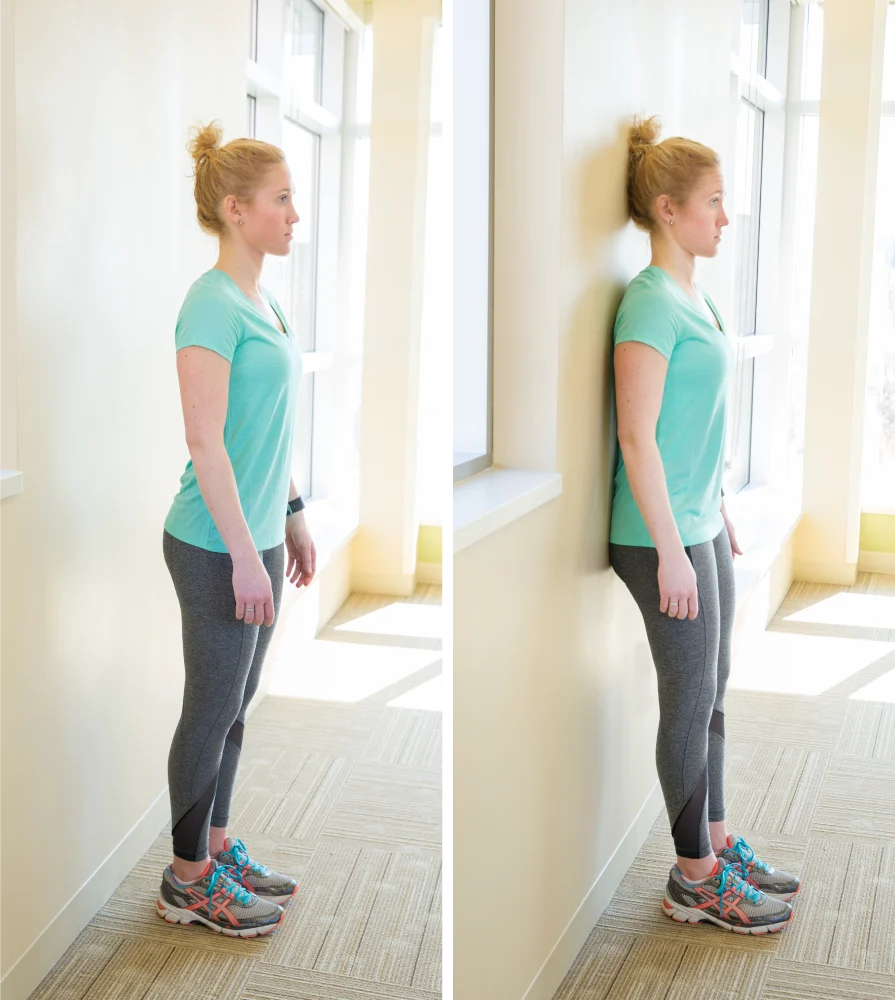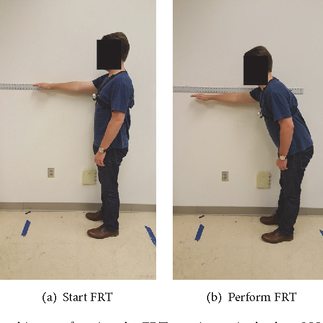Stand Well: 3 Exercises to Ease Back Pain and Boost Your Sports Performance
- Vanessa Mansergh

- Sep 22
- 5 min read
Updated: Sep 23
Have you ever noticed yourself standing in a queue, shifting your weight, back aching, shoulders hunched forward? Many of us think poor posture is just the legacy of years spent at a desk, but that’s only part of the story. Sports and hobbies can shape posture too. Rowers, hikers with heavy back packs not done up properly, cyclists and even swimmers often develop a rounded upper back from the repetitive forward-flexed positions their sports demand.
Whether you spent decades at a computer or hours on the bike, these adaptations can affect balance, increase back pain, and limit how confidently you move as you age. The good news? With awareness and a little practice, you can stand taller, move better, and protect your spine.
Why Good Posture Matters
Good posture isn’t just about “looking upright” — it’s about how well your body stacks up to handle movement and gravity. When your head, shoulders, spine, hips and feet are in good alignment (Pic A), your joints and muscles share the workload evenly. When they’re not, certain areas get overloaded, leading to stiffness, aches, instability or pain.
Ideal alignment or good posture is: your head in neutral, shoulder blades flat against your thorax, ribcage not compressed, spine with its natural curves, the knees not hyperextended and the lower leg vertical and at a right angle to the sole of the foot.

The Downsides of Poor Posture
If you do not have an ideal alignment which is the majority of us to be fair, the chances are you may experience one or all of the following:
Balance issues: Rounded upper back posture shifts your head and shoulders forward, throwing off your centre of gravity. Your ankles, hips and core work harder just to keep you upright.
Back pain: Misalignment means muscles and the cushioning discs between the vertebra (bones) in our spine take on extra load which over time can cause sciatic pain down a leg.
Poor Breathing & stamina: Rounded upper posture compresses the ribcage, limiting lung expansion so you can't get as much oxygen to your muscles as you may need if exercising vigorously and fatigue quicker — something rowers, cyclists and runners often notice.
How Good is Your Posture?
Try these tests at home to measure how good your posture is.
1. Wall Test
Stand with your back against a wall, heels 5–10 cm away.
Try to touch the back of your head, shoulder blades and pelvis to the wall without forcing.
If your head or shoulders won’t reach, it suggests a rounded upper-back posture with your head pulling your forwards.
2. One-Leg Balance
Stand tall and lift one foot just off the ground.
Time how long you can hold it. Wobbles are fine.
Remove your hands from wall & place across your chest. Try again
Under 10 seconds? Your postural control needs some work.
3. Forward Reach
Stand tall with feet hip-width apart. Keeping your arm straight, lift to shoulder height.
Reach forward as far as possible without stepping or tipping.
Repeat with the right arm.
If you feel unsteady or can’t reach far, your postural stability is limited.
The Good News - Pilates Improves Posture
Pilates is about body awareness, alignment, balance, mobility, core stability and controlled strength.
Pilates Postural Cues
Try these now...
Stand up with feet hip distance apart and parallel
Tuck your chin slightly and allow your head to float upwards
Allow your neck to release
Keep your shoulder blades down away from your ears
Keep your breastbone soft
Lengthen up through your spine
Check your pelvis - hands on hips, tip your pelvis forwards and backwards and stop in the middle (neutral)
Knees not hyperextended but soft
Weight even between both feet without rolling in or out
Weight between toes and heels
How much better does that feel? Now try sitting upright using the same cues.
Ways Pilates Can Support Your Lifestyle
Golfer - Improving thoracic rotation and core control reduces lower back strain.
Runner - Stronger hips and better posture improves running efficiency and reduces injury risk.
Gardener– Hip hinge and core work protects the spine and eases stiffness.
Rower, Cyclist or Desk Worker – Upper back mobility to open your chest and drop your shoulders down your back for upright posture taking load off your low back. Strong, stable hips and core enable a prolonged seated posture.
3 Exercises to Start Improving Your Posture Today
Even a few minutes a day can make a difference.
1. Wall Shoulder Opener
Stand with your back against a wall, feet a few inches away.
Place your arms in a “goalpost” shape (elbows bent 90°), back of hands against the wall if possible.
Gently slide your arms up and down, keeping the back of your pelvis, and shoulder blades against the wall, soft and down.
Do not lose your core activation - think low tummy to spine. 25% effort not 100%
Repeat 8–10 times.
Benefit: Opens the chest and counteracts rounded upper-back posture
2. Mini Squat with Core Engagement
Stand tall with feet hip-width apart.
Inhale, then exhale engaging your core while drawing the muscles below your belly button in toward your spine with 25% effort.
Now Imagine perching your bottom on a bar stool behind you as you bend your knees forwards and send your hips backwards.
Keep weight even between both feet, shoulders relaxed.
Rise slowly and repeat 10–12 times.
Benefit: Strengthens legs, glutes, and core — supporting better balance and posture.
3. Heel Raises
Stand tall, feet hip-width apart
Breathe deeply & engage your core
Rock your weight forwards gently towards your toes and lift your heels slowly off the floor, and lower with control as you rock back towards your heels
Keep your big toes down
Repeat 10 times, 6 times a day
Use a wall or chair for support if needed
Stretch your calf muscles afterwards
Benefit: Improves balance, strengthens calf muscles, glutes and core, and encourages upright posture
Tip: Try doing these exercises while brushing your teeth, waiting for the kettle, or in short breaks during the day — little bursts consistently make a big difference over time.
Final Word
Whether your rounded back comes from decades at a desk or thousands of hours on the bike or in the boat, it doesn’t have to define how you move now. By improving your posture, you’ll not only ease back pain, but also boost balance, confidence and performance in the activities you love — from golf swings to gardening, long walks to park runs. Pilates gives you the tools to stand well — and that means live well.
If you are keen to improve your posture, and want the tools to maintain a pain-free body, join me for a free taster at one of my pilates classes live online or in-person by filling the contact form here





















Comments